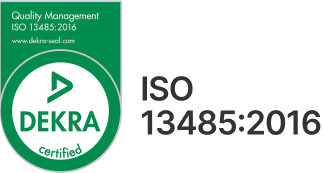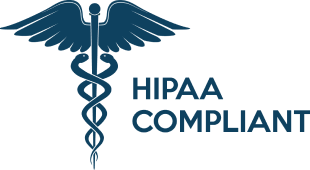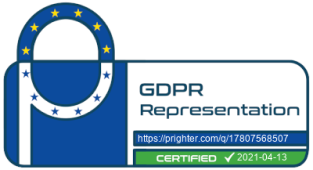Using Digital Tools to Support Employee Wellness
Employee wellness is critical to business growth and success, supporting improvements in productivity, morale and retention. Employee wellness is key to ensuring you’re moving in the right direction and that you’re implementing intelligent changes that best support your workforce. Here’s how digital wellness tools can make all the difference.
Why is Employee Wellness so Critical?
There are a number of reasons why organizations should be aware of employee wellness. First, and perhaps most obviously, you want to ensure that you are fostering a healthy working environment. If employees are highly stressed, burned out, and dealing with mental health crises as a result of a toxic work environment – you need to know about it so that you can make changes.
If the work environment is not supporting the health and wellbeing of employees, the consequences are steep for both the workers themselves, and the business. According to Occupational Health and Safety news, up to 90% of all visits to primary care physicians are for stress-related complaints. “The morbidity and mortality due to stress-related illness is alarming. Emotional stress is a major contributing factor to the six leading causes of death in the United States: cancer, coronary heart disease, accidental injuries, respiratory disorders, cirrhosis of the liver and suicide.”
On the organization side, stress impacts productivity and morale, with higher stress scores correlating to low productivity across multiple demographics. A drop in morale and feelings of stress leads to high turnover of employees, and low productivity takes a direct hit on revenues. The more health issues your employees suffer from, the more the business will pay in terms of sick days, insurance premiums, and retention.
It’s no wonder that an increasing number of studies are proving the importance of measuring stress and other health-related vital signs to ensure organizations can get a holistic view of the wellness of their workforce.
Digital Tools for Employee Wellness: A Key Differentiator for Today’s Wellness Providers
Before digital wellness tools became available, measuring employee wellness was largely subjective. Results from clinical interviews depended on the interpretation of the therapist involved, while expecting employees to self-report has also been shown to be wildly inaccurate. While some employees will underestimate stress levels and ignore significant signs of stress or even illness, others might overstate their symptoms simply due to their personality type. The need for an objective way to measure employee wellness has become clear over time.
Of course, vital signs and stress levels can be measured physically, too. However – it can quickly get expensive to provide physical machines such as blood pressure monitors to all employees, and the business will need to consider a strategy for keeping machines in good working order, replacing broken equipment, and being sent the relevant data. Then, they will need to come up with a way to analyze and measure that data and get meaning out of it.
There is also a margin for error, where a certain percentage of employees will use the tools incorrectly and therefore data will be inaccurate. Finally, there’s an adoption curve to consider with non-digital tools, where employees need to be motivated to take vital signs, and remember to perform checks and send in the results when the tools are physically in front of them.
In contrast, if we take digital mobile applications for example, these are available from a device that all employees already have and are familiar with using, work equally well for all employees with no learning curve, and can be accessed at any time. Today’s workforce are largely digital-native, and enjoy tracking information when the tools are intuitive and provide added value.
What Kinds of Digital Wellness Tools Support Employee Wellness?
McKinsey Research isolates three groups of digital wellness tools that they believe are helpful for employee wellness programs.
Digital aids such as biomarker apps: One example is mobile applications which collect physical data from employees. In some cases the employee will self report, perhaps using a simple emoji format to keep track of their mood. In others, the technology will be more advanced, accurately collecting information on vital signs, such as heart rate, breathing rate, or even blood pressure. This data can be accessed by the employee in real-time, and also provide insight over time by tracking historical data and setting a baseline.
Prevention and treatment solutions: These are more direct employee wellness programs, aiming to improve mental health and resilience. Here, organizations will create a holistic view of what employee well-being looks like, and then use digital tools to support employees in getting there, including preventing problems from occurring ahead of time, supporting less absenteeism and reducing healthcare costs overall. It’s important to think about personalization, as not all employees have the same challenges, and workforces can certainly shift over time.
Reporting and analytics tools: Employees can receive alerts and notifications that support better employee wellness and productivity, and organizations can use anonymized data to understand the needs and overall status of their workforce. Leaders can understand where stress is coming from inside their organization, and enable at-risk employees to become aware of their needs or make smart changes at an executive level, tracking change over time. On a granular level, this means employees know to take a break when necessary, while managers can make adjustments to the work environment and support the needs of employees when stress levels are high in their teams for long periods of time.
At Binah.ai, our technology works across all three groups, offering objective vital-signs measurements from any smartphone, tablet or laptop, allowing employees to measure and report their wellbeing, both in the moment and over time. By measuring physiological parameters like blood pressure, stress levels, heart rate and oxygen saturation, Binah.ai can work as a powerful prevention tool to find the first signs of stress and burnout ahead of time, and report on the need for smart interventions.
Interested in implementing Binah.ai as part of your employee wellness program? Get in touch to schedule a demo.

 close
close





